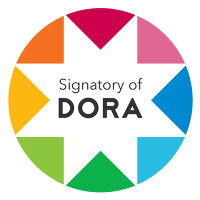Autismo: entre a alta sistematização e a baixa empatia. Um estudo sobre a hipótese de hiper masculinização do cérebro no espectro autista
Keywords:
Autismo, Sistematização, Empatia, Psicologia evolucionista.Abstract
Na década de 1940, Hans Asperger promulgou que o autismo era uma espécie de “exacerbada” masculinização do cérebro. Na década de 1980 embasado na psicobiologia, Baron-Cohen lança a ideia de que o autismo seria um estado de alto déficit de teoria da mente. A posteriori ele refinou os conceitos criando a ideia de hiper sistematização e mais recentemente tal arcabouço teórico deu revitalidade à teoria de Asperger, com a consolidação teórica do autismo como um estado de hiper masculinização do cérebro (extreme male brain). Nesse artigo, revisamos as evidências da neurobiologia, da genética e da psicologia evolucionista a respeito das evidências de uma possível hiper masculinização do cérebro. Para tanto em um primeiro momento apresentamos as principais singularidades neurofuncionais nos cérebros autistas e revisamos os principais genes candidatos ao autismo. Em outro momento, apresentamos a teoria de Baron-Cohen, junto com as definições sobre dimorfismo sexual e os conceitos de mentes empáticas (femininas), mentes sistemáticas (masculinas) e mentes hiper sistemáticas (“exacerbadamente” masculinas). Mesmo que algumas das evidências apontadas ainda estejam em estágio incipiente, a maior parte delas corrobora a aderência da tese de Baron-Cohen e os primeiros preceitos de Asperger.Downloads
References
Abdolmaleky, H. M., Cheng, K. H., Russo, A., Smith, C. L., Faraone, S. V., Wilcox, M., . & Tsuang, M. T. (2005). “Hypermethylation of the reelin (RELN) promoter in the brain of schizophrenic patients: a preliminary report”. American Journal of Medical Genetics Part B: Neuropsychiatric Genetics, 134(1), 60-66.
Abrahams, B. S., & Geschwind, D. H. (2008). “Advances in autism genetics: on the threshold of a new neurobiology”. Nature Reviews Genetics, 9(5), 341-355.
Alvarez-Dolado, M., Pardal, R., Garcia-Verdugo, J. M., Fike, J. R., Lee, H. O., Pfeffer, K., .& Alvarez-Buylla, A. (2003). “Fusion of bone-marrow-derived cells with Purkinje neurons, cardiomyocytes and hepatocytes”. Nature, 425(6961), 968-973.
Amaral, D. G., & Corbett, B. A. (2003, June). “The amygdala, autism and anxiety” inn Novartis Found Symp (Vol. 251, pp. 177-187).
Armstrong, E. (1986). “Enlarged limbic structures in the human brain: the anterior thalamus and medial mamillary body”. Brain Research, 362(2), 394-397.
Bailey, A., Palferman, S., Heavey, L., & Le Couteur, A. (1998). “Autism: the phenotype in relatives”. Journal of autism and developmental disorders, 28(5), 369-392.
Baron-Cohen, S. (2002). “The extreme male brain theory of autism”. Trends in cognitive sciences, 6(6), 248-254.
Baron-Cohen, S. (2004). “The cognitive neuroscience of autism”. Journal of Neurology, Neurosurgery & Psychiatry, 75(7), 945-948.
Baron-Cohen, S. (2006). “The hyper-systemizing, assortative mating theory of autism”. Progress in Neuro-Psychopharmacology and Biological Psychiatry,30(5), 865-872.
Baron‐Cohen, S. (2009). “Autism: The Empathizing–Systemizing (E‐S) Theory”. Annals of the New York Academy of Sciences, 1156(1), 68-80.
Baron-Cohen, S., & Hammer, J. (1997). “Is autism an extreme form of the "male brain"?”. Advances in Infancy Research, 11, 193-218.
Baron-Cohen, S., & Wheelwright, S. (2004). “The empathy quotient: an investigation of adults with Asperger syndrome or high functioning autism, and normal sex differences”. Journal of autism and developmental disorders, 34 (2), 163-175.
Baron-Cohen, S., Ashwin, E., Ashwin, C., Tavassoli, T., & Chakrabarti, B. (2009). “Talent in autism: hyper-systemizing, hyper-attention to detail and sensory hypersensitivity”. Philosophical Transactions of the Royal Society B: Biological Sciences, 364 (1522), 1377-1383.
Baron-Cohen, S., Lutchmaya, S., & Knickmeyer, R. (2004). Prenatal testosterone in mind [electronic resource]: amniotic fluid studies. The MIT Press.
Baron-Cohen, S., Wheelwright, S., Skinner, R., Martin, J., & Clubley, E. (2001). “The autism-spectrum quotient (AQ): Evidence from asperger syndrome/high-functioning autism, malesand females, scientists and mathematicians”. Journal of autism and developmental disorders, 31(1), 5-17.
Bauman, M. L. (1991). “Microscopic neuroanatomic abnormalities in autism”. Pediatrics, 87(5), 791-796.
Beacher, F. D., Minati, L., Baron-Cohen, S., Lombardo, M. V., Lai, M. C., Gray, M. A., & Critchley, H. D. (2012). “Autism attenuates sex differences in brain structure: a combined voxel-based morphometry and diffusion tensor imaging study”. American Journal of Neuroradiology, 33(1), 83-89.
Benayed, R., Gharani, N., Rossman, I., Mancuso, V., Lazar, G., Kamdar, S., . & Millonig, J. H. (2005). “Support for the Homeobox Transcription Factor Gene as an Autism Spectrum Disorder Susceptibility Locus”. The American Journal of Human Genetics, 77(5), 851-868.
Blatt, G. J., Fitzgerald, C. M., Guptill, J. T., Booker, A. B., Kemper, T. L., & Bauman, M. L. (2001). “Density and distribution of hippocampal neurotransmitter receptors in autism: an autoradiographic study”. Journal of autism and developmental disorders, 31(6), 537-543.
Campbell, D. B., Sutcliffe, J. S., Ebert, P. J., Militerni, R., Bravaccio, C., Trillo, S., . & Levitt, P. (2006). “A genetic variant that disrupts MET transcription is associated with autism”. Proceedings of the National Academy of Sciences, 103(45), 16834-16839.
Castelli, F., Frith, C., Happé, F., & Frith, U. (2002). “Autism, Asperger syndrome and brain mechanisms for the attribution of mental states to animated shapes”. Brain, 125(8), 1839-1849.
Connellan, J., Baron-Cohen, S., Wheelwright, S., Batki, A., & Ahluwalia, J. (2000). “Sex differences in human neonatal social perception”. Infant Behavior and Development, 23(1), 113-118.
Conroy, J., Meally, E., Kearney, G., Fitzgerald, M., Gill, M., & Gallagher, L. (2004). “Serotonin transporter gene and autism: a haplotype analysis in an Irish autistic population”. Molecular psychiatry, 9(6), 587-593.
DeLorey, T. M., Sahbaie, P., Hashemi, E., Homanics, G. E., & Clark, J. D. (2008). “Gabrb3 gene deficient mice exhibit impaired social and exploratory behaviors, deficits in non-selective attention and hypoplasia of cerebellar vermal lobules: a potential model of autism spectrum disorder”. Behavioural brain research, 187(2), 207-220.
Duong, T., Robinson, H., BA, D. G., & Ritvo, A. (1986). “Lower Purkinje cell counts in the cerebella of four autistic subjects: initial findings of the UCLA-NSAC Autopsy Research Report”. Am J Psychiatry, 143(7), 862-866.
Durand, C. M., Betancur, C., Boeckers, T. M., Bockmann, J., Chaste, P., Fauchereau, F. & Bourgeron, T. (2006). “Mutations in the gene encoding the synaptic scaffolding protein SHANK3 are associated with autism spectrum disorders”. Nature genetics, 39(1), 25-27.
El-Fishawy, P. (2010). “The Genetics of Autism: Key Issues, Recent Findings and Clinical Implications”. The Psychiatric clinics of North America, 33(1), 83.
Fatemi, S. H., Halt, A. R., Realmuto, G., Earle, J., Kist, D. A., Thuras, P., & Merz, A. (2002). “Purkinje cell size is reduced in cerebellum of patients with autism”. Cellular and molecular neurobiology, 22(2), 171-175.
Fuster, J. (2008). The prefrontal cortex. Access Online via Elsevier.
Gadia, C. A., Tuchman, R., & Rotta, N. T. (2004). “Autism and pervasive developmental disorders”. Jornal de Pediatria, 80(2), 83-94.
García-Peñas, J. J. (2009). “Autismo, epilepsia y patología del lóbulo temporal”. Rev Neurol, 48(Supl 2), S35-45.
Goldman, J. G., Stebbins, G. T., Bernard, B., Stoub, T. R., Goetz, C. G., & Toledo‐Morrell, L. (2012). “Entorhinal cortex atrophy differentiates Parkinson's disease patients with and without dementia”. Movement Disorders, 27(6), 727-734.
Grace, A. A. (2010). “Dopamine system dysregulation by the ventral subiculum as the common pathophysiological basis for schizophrenia psychosis, psychostimulant abuse, and stress”. Neurotoxicity research, 18(3-4), 367-376.
Gregory, S., Connelly, J., Towers, A., Johnson, J., Biscocho, D., Markunas, C. & Pericak-Vance, M. (2009). “Genomic and epigenetic evidence for oxytocin receptor deficiency in autism”. BMC medicine, 7(1), 62.
Hafting, T., Fyhn, M., Molden, S., Moser, M. B., & Moser, E. I. (2005). “Microstructure of a spatial map in the entorhinal cortex”. Nature, 436(7052), 801-806.
Hill, E. L., & Frith, U. (2003). “Understanding autism: insights from mind and brain”. Philosophical Transactions of the Royal Society of London. Series B: Biological Sciences, 358(1430), 281-289.
Hollander, E., Kaplan, A., Cartwright, C., & Reichman, D. (2000). “Venlafaxine in children, adolescents, and young adults with autism spectrum disorders: an open retrospective clinical report”. Journal of child neurology, 15(2), 132-135.
Kanwisher, N., McDermott, J., & Chun, M. M. (1997). “The fusiform face area: a module in human extrastriate cortex specialized for face perception”. The Journal of Neuroscience, 17(11), 4302-4311.
Kim, S. J., Young, L. J., Gonen, D., Veenstra-VanderWeele, J., Courchesne, R., Courchesne, E. & Insel, T. R. (2002). “Transmission disequilibrium testing of arginine vasopressin receptor 1A (AVPR1A) polymorphisms in autism”. Molecular psychiatry, 7(5), 503-507.
Kumar, R., Woo, M. A., Birrer, B. V., Macey, P. M., Fonarow, G. C., Hamilton, M. A., & Harper, R. M. (2009). “Mammillary bodies and fornix fibers are injured in heart failure”. Neurobiology of disease, 33(2), 236-242.
Laumonnier, F., Shoubridge, C., Antar, C., Nguyen, L. S., Van Esch, H., Kleefstra, T., & Raynaud, M. (2009). “Mutations of the UPF3B gene, which encodes a protein widely expressed in neurons, are associated with nonspecific mental retardation with or without autism”. Molecular psychiatry,15(7), 767-776.
Lawson-Yuen, A., Saldivar, J. S., Sommer, S., & Picker, J. (2008). “Familial deletion within NLGN4 associated with autism and Tourette syndrome”. European Journal of Human Genetics, 16(5), 614-618.
Mandy, W. P., & Skuse, D. H. (2008). “Research Review: What is the association between the social‐communication element of autism and repetitive interests, behaviours and activities?” Journal of Child Psychology and Psychiatry, 49(8), 795-808.
Mutter, J., Naumann, J., Schneider, R., Walach, H., & Haley, B. (2005). “Mercury and autism: accelerating evidence”. Neuroendocrinol Lett, 26(5), 439-446.
Nacewicz, B. M., Dalton, K. M., Johnstone, T., Long, M. T., McAuliff, E. M., Oakes, T. R., & Davidson, R. J. (2006). “Amygdala volume and nonverbal social impairment in adolescent and adult males with autism”. Archives of general psychiatry, 63(12), 1417.
Nelson, K. B., & Bauman, M. L. (2003). “Thimerosal and autism?. Pediatrics,111(3), 674-679.
Nguyen, A., Rauch, T. A., Pfeifer, G. P., & Hu, V. W. (2010). “Global methylation profiling of lymphoblastoid cell lines reveals epigenetic contributions to autism spectrum disorders and a novel autism candidate gene, RORA, whose protein product is reduced in autistic brain”. The FASEB Journal, 24(8), 3036-3051.
Parker, S. K., Schwartz, B., Todd, J., & Pickering, L. K. (2004). “Thimerosal-containing vaccines and autistic spectrum disorder: a critical review of published original data”. Pediatrics, 114(3), 793-804.
Peça, J., Feliciano, C., Ting, J. T., Wang, W., Wells, M. F., Venkatraman, T. N. & Feng, G. (2011). “Shank3 mutant mice display autistic-like behaviours and striatal dysfunction”. Nature, 472(7344), 437-442.
Pfaff, D. W., Rapin, I., & Goldman, S. (2011). “Male predominance in autism: neuroendocrine influences on arousal and social anxiety”. Autism Research,4(3), 163-176.
Pierce, K., Müller, R. A., Ambrose, J., Allen, G., & Courchesne, E. (2001). “Face processing occurs outside the fusiformface area'in autism: evidence from functional MRI”. Brain, 124(10), 2059-2073.
Polšek, D., Jagatic, T., Cepanec, M., Hof, P. R., & Šimić, G. (2011). “Recent developments in neuropathology of autism spectrum disorders”. Translational neuroscience, 2(3), 256-264.
Purcell, A. E., Jeon, O. H., Zimmerman, A. W., Blue, M. E., & Pevsner, J. (2001). “Postmortem brain abnormalities of the glutamate neurotransmitter system in autism”. Neurology, 57(9), 1618-1628.
Rippon, G., Brock, J., Brown, C., & Boucher, J. (2007). “Disordered connectivity in the autistic brain: Challenges for the ‘new psychophysiology’”. International Journal of Psychophysiology, 63(2), 164-172.
Robinson, P. D., Schutz, C. K., Macciardi, F., White, B. N., & Holden, J. J. (2001). “Genetically determined low maternal serum dopamine β‐hydroxylase levels and the etiology of autism spectrum disorders”. American Journal of Medical Genetics, 100(1), 30-36.
Ronald, A., Happe, F., Bolton, P., Butcher, L. M., Price, T. S., Wheelwright, S. & Plomin, R. (2006). “Genetic heterogeneity between the three components of the autism spectrum: a twin study”. Journal of the American Academy of Child & Adolescent Psychiatry, 45(6), 691-699.
Rubenstein, J. L. R., & Merzenich, M. M. (2003). “Model of autism: increased ratio of excitation/inhibition in key neural systems”. Genes, Brain and Behavior, 2(5), 255-267.
Saitoh, O., Karns, C. M., & Courchesne, E. (2001). “Development of the hippocampal formation from 2 to 42 years MRI evidence of smaller area dentata in autism”. Brain, 124(7), 1317-1324.
Schanen, N. C. (2006). “Epigenetics of autism spectrum disorders”. Human molecular genetics, 15 (suppl 2), R138-R150.
Stephan, H. (1983). “Evolutionary trends in limbic structures”. Neuroscience & Biobehavioral Reviews, 7(3), 367-374.
Teicher, M. H., Anderson, C. M., & Polcari, A. (2012). “Childhood maltreatment is associated with reduced volume in the hippocampal subfields CA3, dentate gyrus, and subiculum”. Proceedings of the National Academy of Sciences, 109(9), E563-E572.
Wassink, T. H., Piven, J., Vieland, V. J., Pietila, J., Goedken, R. J., Folstein, S. E., & Sheffield, V. C. (2002). “Evaluation of FOXP2 as an autism susceptibility gene”. American journal of medical genetics, 114(5), 566-569.
Whitney, E. R., Kemper, T. L., Bauman, M. L., Rosene, D. L., & Blatt, G. J. (2008). “Cerebellar Purkinje cells are reduced in a subpopulation of autistic brains: a stereological experiment using calbindin-D28k”. The Cerebellum, 7(3), 406-416.
Witter, M. P., & Groenewegen, H. J. (1990). “The subiculum: cytoarchitectonically a simple structure, but hodologically complex”. Progress in brain research, 83, 47-58.
Yang, S. Y., Cho, S. C., Yoo, H. J., Cho, I. H., Park, M., Yoe, J. & Kim, S. (2010). “Family-based association study of microsatellites in the 5′ flanking region of< i> AVPR1A with autism spectrum disorder in the Korean population”. Psychiatry research, 178(1), 199-201.
Young, L. J., Pitkow, L. J., & Ferguson, J. N. (2001). “Neuropeptides and social behavior: animal models relevant to autism”. Molecular psychiatry, 7, S38-9.
Zhang, Y., Schuff, N., Jahng, G. H., Bayne, W., Mori, S., Schad, L. & Weiner, M. W. (2007). “Diffusion tensor imaging of cingulum fibers in mild cognitive impairment and Alzheimer disease”. Neurology, 68(1), 13-19.
Zilbovicius, M., Garreau, B., Samson, Y., Remy, P., Barthelemy, C., Syrota, A. & Lelord, G. (1995). “Delayed maturation of the frontal cortex in childhood autism”. American Journal of Psychiatry, 152(2), 248-252.
Downloads
Published
How to Cite
Issue
Section
License
Revista Pilquen, Sección Psicopedagogía sostiene su compromiso con las políticas de Acceso Abierto a la información científica, al considerar que tanto las publicaciones científicas como las investigaciones financiadas con fondos públicos deben circular en Internet en forma libre, gratuita y sin restricciones.
Los trabajos presentados en Revista Pilquen, Sección Psicopedagogía deben ser originales e inéditos y no estar postulados simultáneamente en otras revistas. El envío de todo tipo de colaboración implica la aceptación de las normas editoriales de la revista y la autorización al Comité Editorial para que difunda los trabajos tanto en la revista como en las bases de datos o sistemas de indización en donde se alojan los contenidos de Pilquen.
Los autores que publican en esta revista están de acuerdo con los siguientes términos:
1) Los autores conservan los derechos de autor y garantizan a la revista el derecho de ser la primera publicación del trabajo al igual que licenciado bajo una Creative Commons "Atribución -No Comercial CC BY-NC-SA”, mediante la cual ser permite copiar, reproducir, distribuir, comunicar públicamente la obra y generar obras derivadas, siempre y cuando se cite y reconozca al autor original. No se permite, sin embargo, utilizar la obra ni sus posibles obras derivadas con fines comerciales.
2) Los autores pueden establecer por separado acuerdos adicionales para la distribución no exclusiva de la versión de la obra publicada en la revista (por ejemplo, situarlo en un repositorio institucional o publicarlo en un libro), con un reconocimiento de su publicación inicial en esta revista.
3) El o los autores no recibirán compensación monetaria de Pilquen por el uso del material contenido en el artículo; así como tampoco asumirán ningún costo de publicación de los mismos.













